A research paper is a presentation of someone's research, describing all the work, analysis, and findings they have gathered during the research period. Although writing a research paper is a challenging task, writing a perfect conclusion is often more difficult for many researchers. The conclusion should be clear and wrap up the research in the best-structured way. So, if you are also struggling with writing a conclusion for your research paper, this guide is for you. Here we will discuss in detail how to write a conclusion for a research paper, especially talking about the innovative AI-based approach offered by UPDF AI to write a conclusion autonomously and instantly.
Part 1. What is a Conclusion for Research Papers?
A conclusion is a research paper's final section that wraps up the research and leaves readers with an impactful final impression. The main targets of a conclusion in a research paper are as follows:
- Repeat the research problem statement concisely.
- Summarize the research findings or arguments.
- Present the research key takeaways or future implications.
- Include a call for action to leave a memorable final impression.
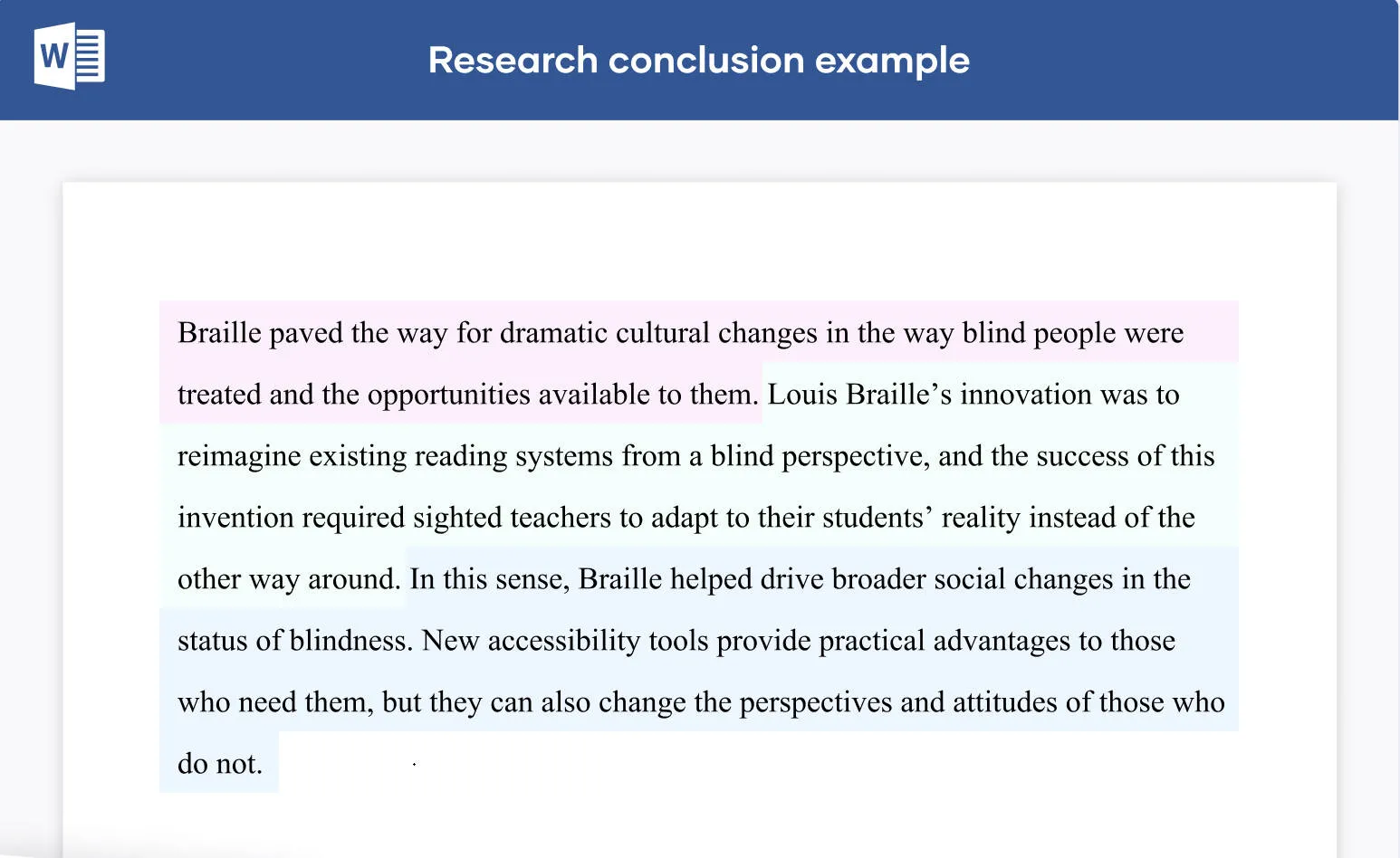
In most research papers, the length of a conclusion is generally one paragraph. However, some complicated or empirical research papers might have multiple paragraphs. Overall, the content of the conclusion should concisely and effectively present the research contribution, leaving the reader with insights and a sense of satisfaction.
Part 2. How to Easily Write a Conclusion for a Research Paper
Technological advancements have transformed almost all aspects of academic studies, including the process of writing a conclusion for a research paper. With the power of Artificial Intelligence (AI), you can now autonomously and efficiently write a conclusion based on the provided prompts. This is precisely what UPDF AI, the smart assistant integrated into UPDF, is meant to offer.
UPDF AI is the most powerful AI assistant that provides a chat-based approach to craft a conclusion for a research paper. It supports dozens of languages and can intelligently write a conclusion from even a 100-page research paper. Download it now and feel the difference!
Windows • macOS • iOS • Android 100% secure
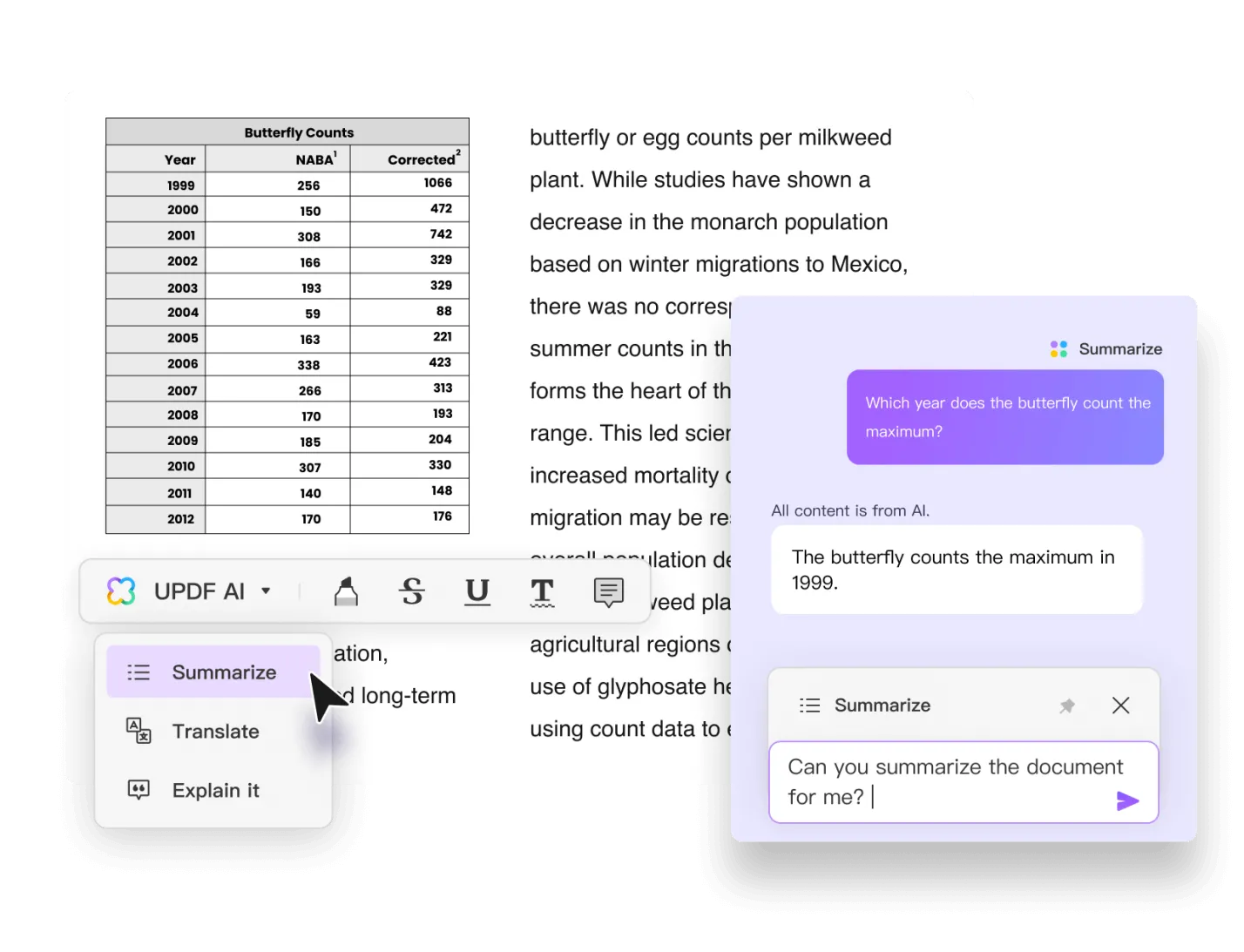
UPDF provides a convenient way to write a conclusion for a research paper, all you have to do is turn your research paper into a PDF and upload it to UPDF. Then, UPDF will analyze the research paper documents and efficiently deliver a concise conclusion within seconds.
Follow the below steps to learn how to use UPDF AI to write a conclusion in a research:
Step 1. Download and launch UPDF on your device.
Windows • macOS • iOS • Android 100% secure
If your research paper is in PDF format, click the "Open File" to browse and open the file. Alternatively, if it is in Word format, then click Tools > Other > PDF from Word (.docx).
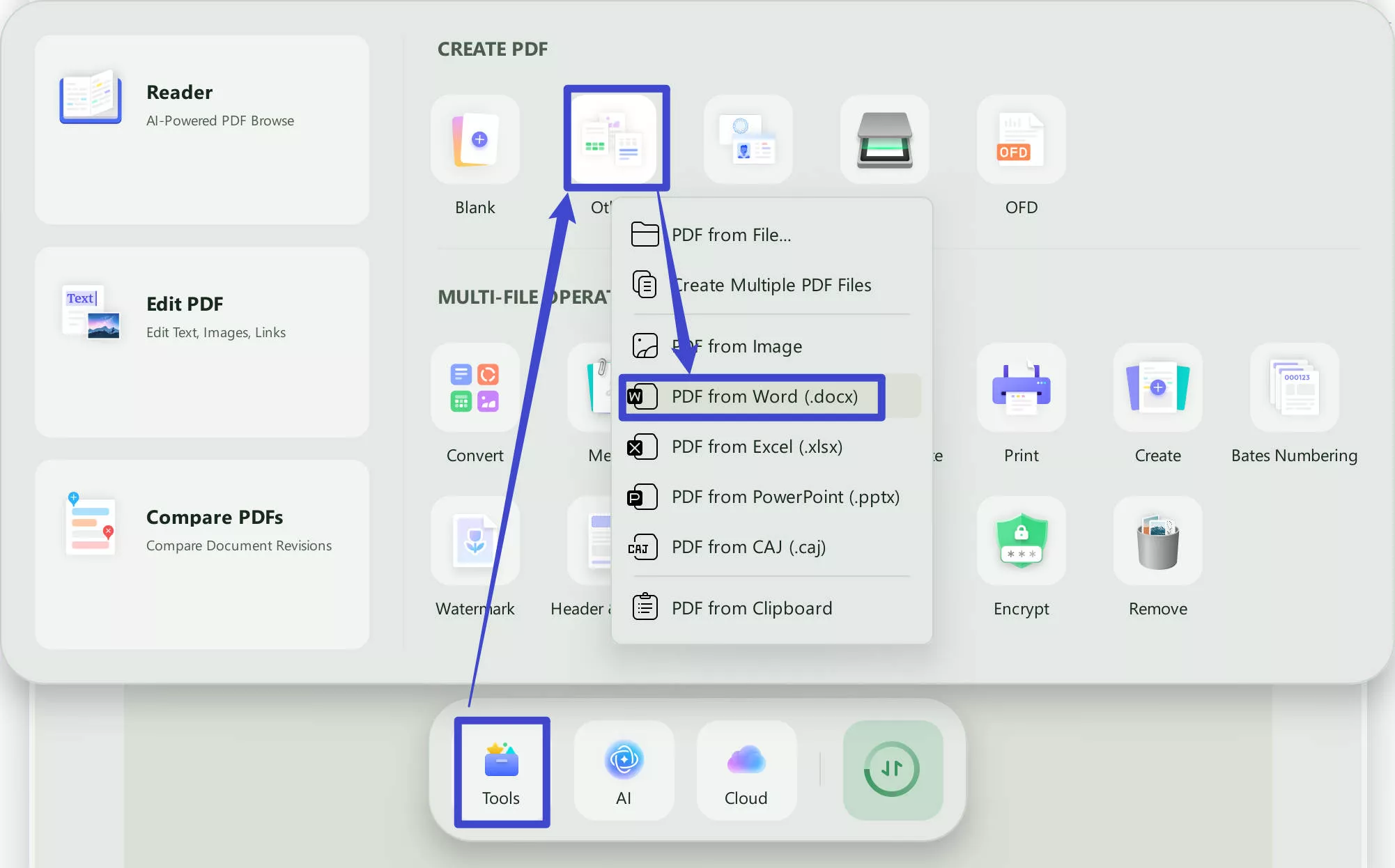
Step 2. Once the file is opened, click the UPDF AI icon from the bottom right corner to launch the AI assistant.
Step 3. Click the "Get Started" tab and then the AI assistant will analyze and process with a summary. Afterward, type "Provide a conclusion for this research paper" in the chat box and hit "Enter". It will instantly provide a conclusion for the research paper.
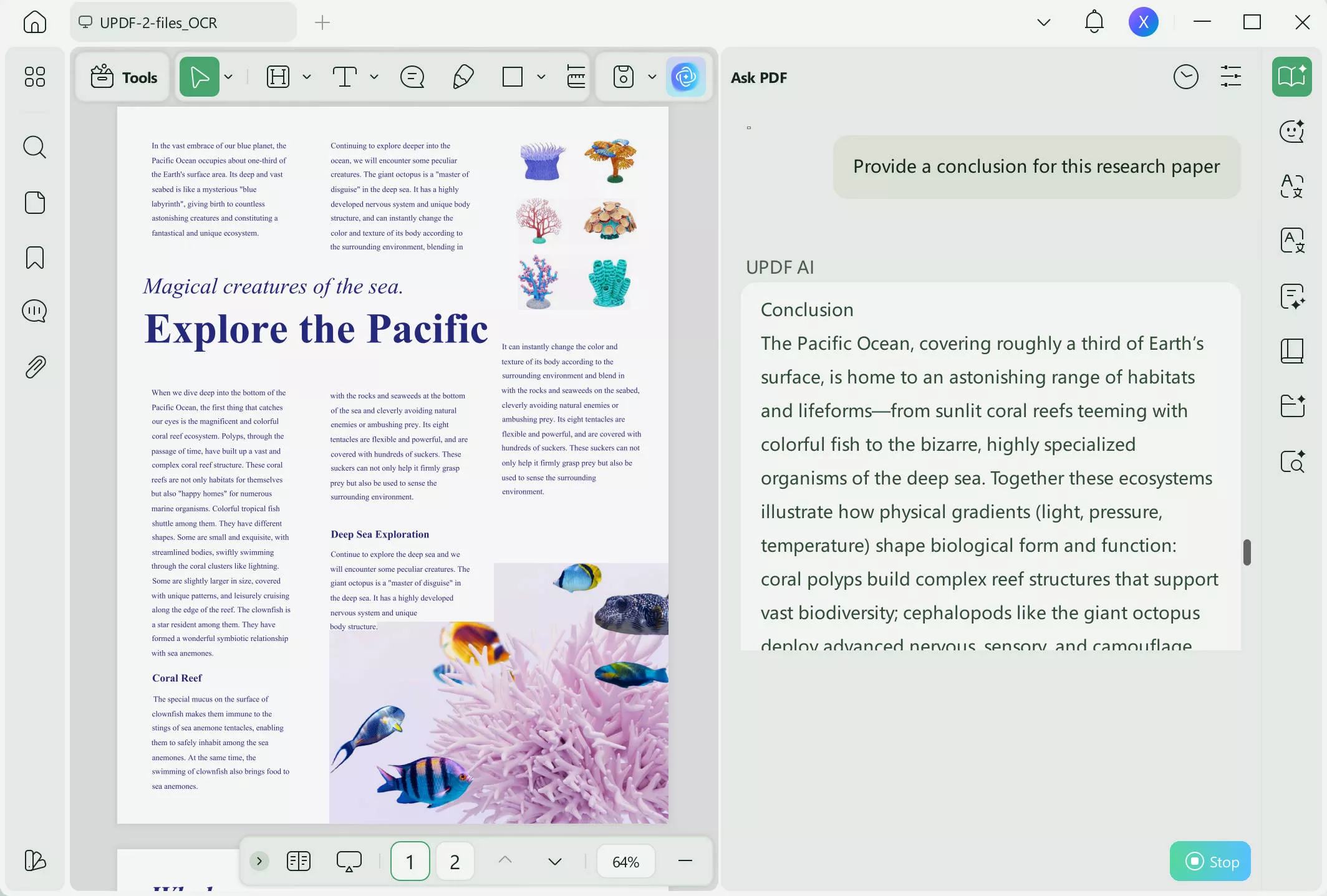
Note: If you desire a summary of one of the paragraphs in the research paper or seek translations in other languages, you can simply select the content, choose UPDF AI, and opt for the Translate or Summarize option provided. Then, you'll obtain the answers you seek.
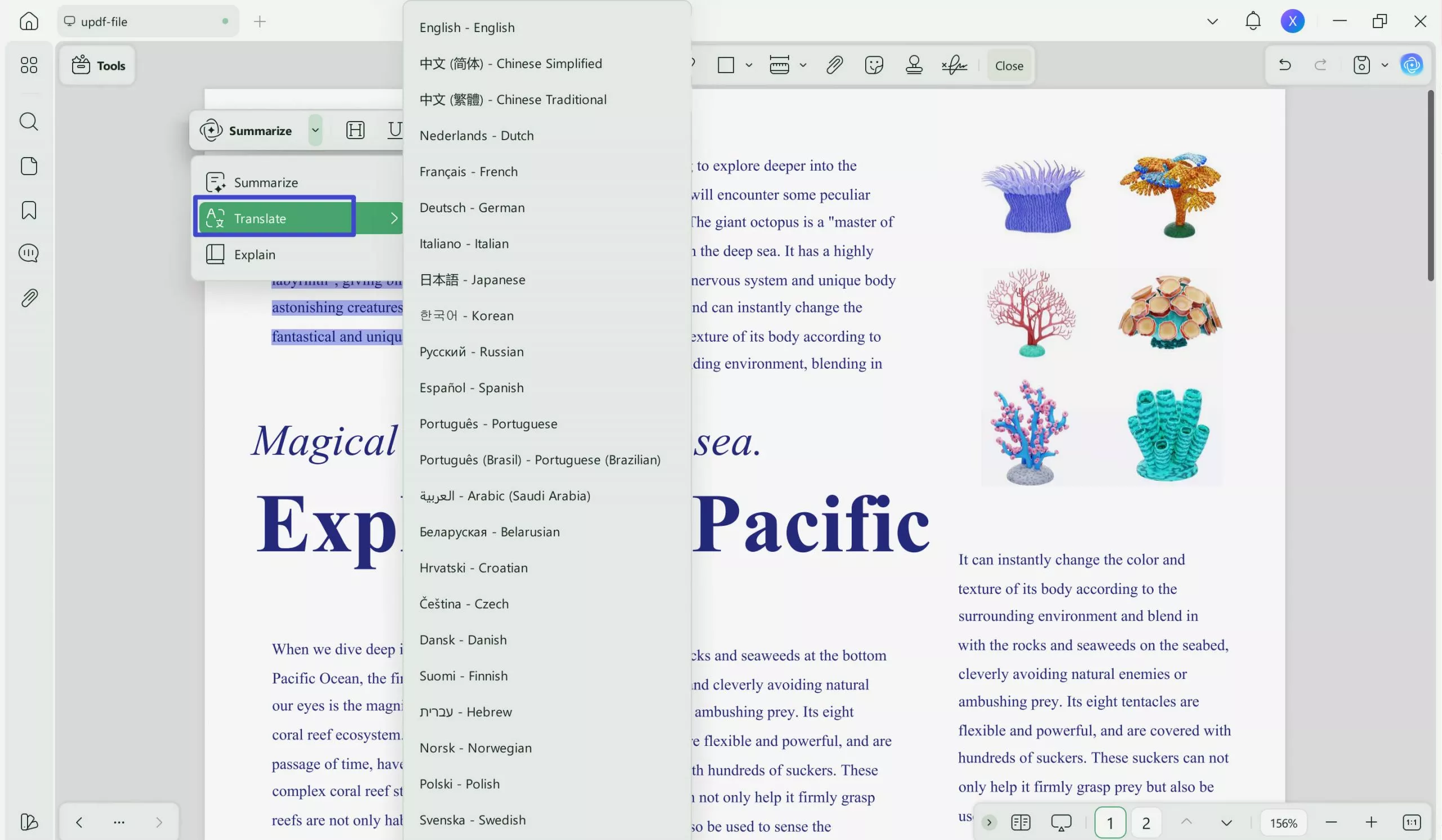
Step 5. Once you get the desired conclusion from UPDF AI, the last thing to do is give a final human touch to enhance its quality further.
This way, you can easily address how to write a good conclusion in a research paper with the intuitive approach of UPDF AI. Moreover, you can also use the AI assistant to summarize, explain, translate, rewrite, grammar check, and other similar purposes. In short, UPDF AI is an all-in-one powerful AI tool to write a perfect conclusion for a research paper and do other customizations in seconds. Download and upgrade to UPDF AI Pro now and get ready to be amazed. You won't regret it!
Windows • macOS • iOS • Android 100% secure
Part 3. How to Write a Conclusion for a Research Paper with the Common Way
The above AI-based approach is the ideal way to address how to write a conclusion in a research paper, but you should also be aware of the common manual way of writing the conclusion. This way, you can utilize the power of AI and your human skills to craft a quality conclusion.
3.1 Outlines for a Conclusion in Research Papers
When writing a conclusion, always start with creating an outline depending on your research paper. The outline can vary based on the research topic, such as empirical study, argument study, etc. However, the general outline structure followed in most conclusions is as follows:
- Write the research's main objective
- Restate the thesis statement
- Sum up the research findings
- Point out future research direction
- Impactful closing thought
The above outline is an all-in-one answer for all researchers looking for how to write a good conclusion in a research paper. Most research papers follow the same outline structure, no matter if the conclusion is one paragraph or multiple paragraphs.
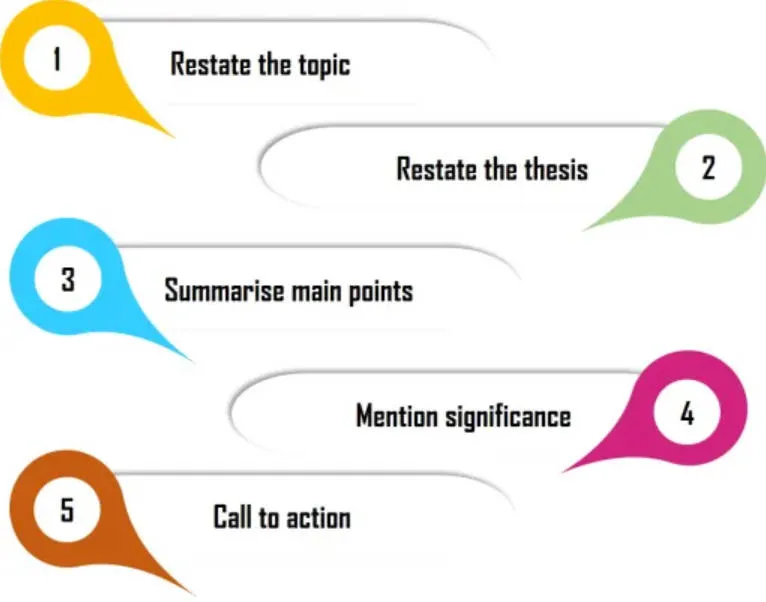
3.2. 5 Steps to Write a Conclusion in a Research Paper Manually
To write the conclusion in a research paper manually, you must follow the outline plan discussed above to gradually create a perfect conclusion. But first, you have to decide the length of the conclusion, i.e., whether the conclusion will be one paragraph or extend to multiple paragraphs. The length of the conclusion mainly depends on the type of research. So, finalize the length and then head for the below steps to learn how to write a conclusion for a research paper manually:
Step 1. Restate the Research Problem
The first thing you should cover in the conclusion is the research problem. There are two reasons to restate the research problem in the conclusion. First, it helps the reader revise what are the main research objectives. Secondly, it facilitates quick readers who just want to know the end results of the research instead of reading the whole research.
While restating the research problem, try using different phrases than the ones you used earlier in the research. Moreover, keep this part concise and to the point.
Step 2. Restate the Thesis Statement
Once you have mentioned the research problem, now restate the thesis statement. This way, readers know the research problem and the expected outcome of the research. Again, try to use a different wording than what you wrote in the rest of the research.
Step 3. Sum Up the Research Findings
Now you have to write about the main research findings briefly. You should avoid including all the research findings in the conclusion. Shortlist the most relevant findings and then present them efficiently. The main focus should be that the findings must answer the research problem.
Step 4. Point Out Implications
After mentioning the research findings, the last thing to cover in the conclusion is highlighting the broader research implications. Mention the key takeaway from the research or/and provide suggestions for future research. This part should be brief and to the point.
Step 5. Strong Call for Action Statement
The conclusion's last one or two sentences should be about ending the research with a strong call for action statement. It could be a practical recommendation, advocate for policy changes, encourage social awareness, or any other. Overall, the motive should be to have a meaningful impact on the readers.
Part 4. 6 Tips for Writing a Conclusion for a Research Paper
Despite brainstorming and learning how to write a good conclusion in a research paper, many researchers unintentionally make mistakes that impact the overall quality of the conclusion. Therefore, take a quick look at the below tips to increase your proficiency in writing a well-crafted conclusion:
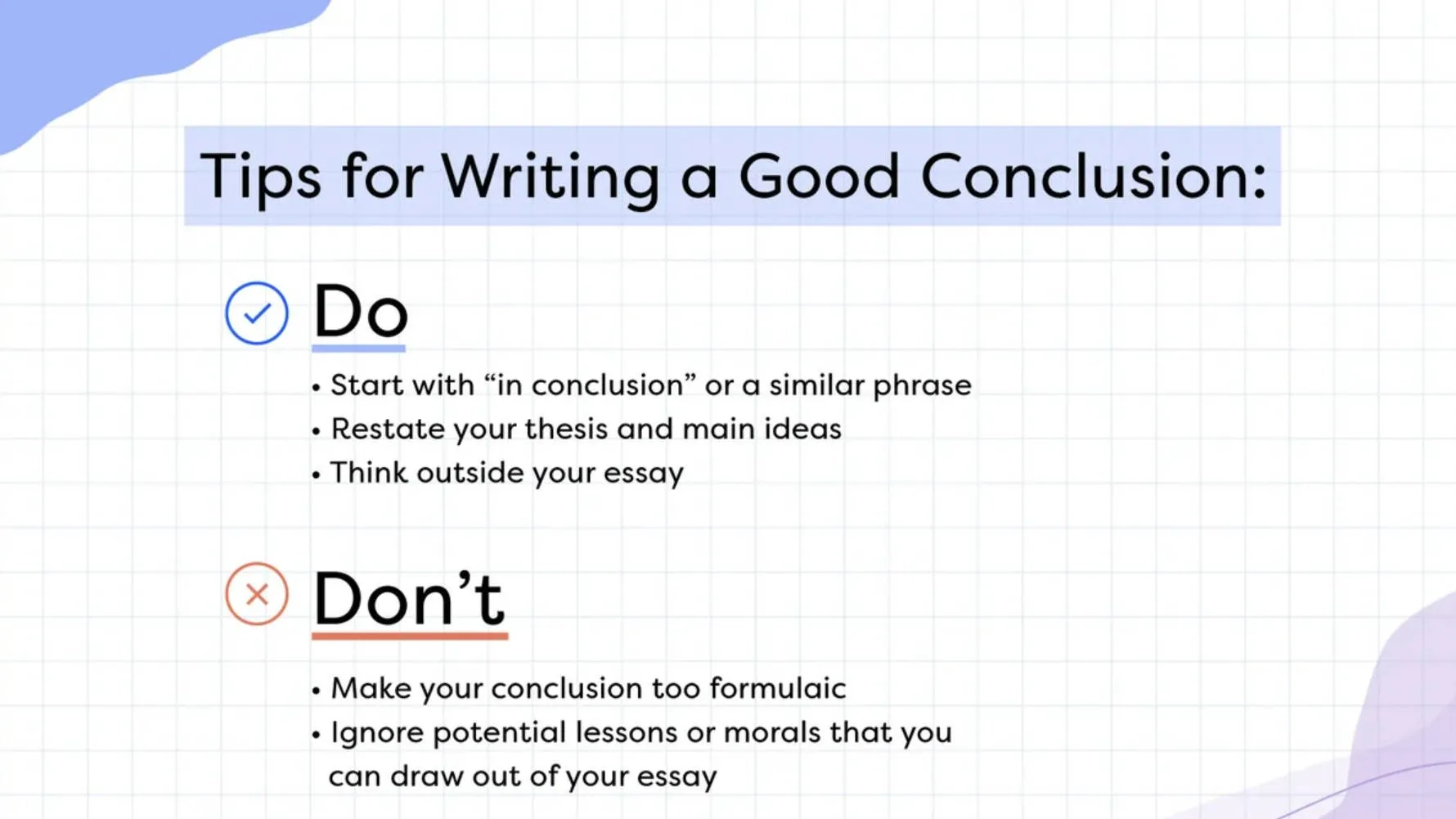
1. Avoid Using Common Opening Phrases
Using opening phrases like "In conclusion", "To conclude", "In summary", "To sum up", and similar others are considered ineffective phrases in writing a conclusion for a research paper. These phrases might be effective in oral presentations but don't look logical in research papers, as the readers already know which part they are reading.
2. Avoid Introducing New Information
The conclusion should be free from any new information that hasn't been mentioned before in the research body. The purpose of the conclusion is to convey the value of the research, not confuse the readers with new information. So, make sure that conclusion is talking about the research concisely and effectively.
3. Use Concise and Clear Language
No matter whether the readers read the whole research body, they will definitely read the conclusion. Therefore, the wording in the conclusion should be clear, easy to read, and concise. Don't make the readers spend time on lengthy descriptions. Talk to the point and reflect on the value of your research.
4. Avoid Repeating the Same Content
On the one hand, the conclusion should not introduce new information, but on the other hand, it should avoid repeating the same content or wording. Try to present the key points of the research in fresh and concise wording. This approach will lead to more engagement and leave a lasting impression.
5. Challenge Your Conclusion
If you are doubtful about your conclusion quality or wording, challenge it. Ask your friend to read the conclusion. After every statement your friend reads, ask "So what". This approach will help you evaluate your conclusion, find loopholes, and turn it into a masterpiece.
6. Avoid Being Apologetic
Sometimes, the research outcomes may not fulfill all desired expectations, causing researchers to be apologetic in the conclusion section. However, you should avoid being apologetic and not devalue your efforts. Instead, you should focus on confidently presenting the findings and mentioning the shortcomings as potential improvement areas for future research.
Wrapping Up
The conclusion is essential to all research papers, as it provides a concise and solid bigger picture of the whole research. Following the above steps on how to write a conclusion for a research paper manually, you can craft a well-structured conclusion for your research paper. However, this is the era of AI advancements, so you should also embrace technological advancements while writing the research. So, the best approach is to use UPDF AI to get a draft of the conclusion and then input your human insights to craft a top-notch conclusion. Give UPDF AI a try – tap the download button below!
Windows • macOS • iOS • Android 100% secure
 UPDF
UPDF
 UPDF for Windows
UPDF for Windows UPDF for Mac
UPDF for Mac UPDF for iPhone/iPad
UPDF for iPhone/iPad UPDF for Android
UPDF for Android UPDF AI Online
UPDF AI Online UPDF Sign
UPDF Sign Edit PDF
Edit PDF Annotate PDF
Annotate PDF Create PDF
Create PDF PDF Form
PDF Form Edit links
Edit links Convert PDF
Convert PDF OCR
OCR PDF to Word
PDF to Word PDF to Image
PDF to Image PDF to Excel
PDF to Excel Organize PDF
Organize PDF Merge PDF
Merge PDF Split PDF
Split PDF Crop PDF
Crop PDF Rotate PDF
Rotate PDF Protect PDF
Protect PDF Sign PDF
Sign PDF Redact PDF
Redact PDF Sanitize PDF
Sanitize PDF Remove Security
Remove Security Read PDF
Read PDF UPDF Cloud
UPDF Cloud Compress PDF
Compress PDF Print PDF
Print PDF Batch Process
Batch Process About UPDF AI
About UPDF AI UPDF AI Solutions
UPDF AI Solutions AI User Guide
AI User Guide FAQ about UPDF AI
FAQ about UPDF AI Summarize PDF
Summarize PDF Translate PDF
Translate PDF Chat with PDF
Chat with PDF Chat with AI
Chat with AI Chat with image
Chat with image PDF to Mind Map
PDF to Mind Map Explain PDF
Explain PDF Scholar Research
Scholar Research Paper Search
Paper Search AI Proofreader
AI Proofreader AI Writer
AI Writer AI Homework Helper
AI Homework Helper AI Quiz Generator
AI Quiz Generator AI Math Solver
AI Math Solver PDF to Word
PDF to Word PDF to Excel
PDF to Excel PDF to PowerPoint
PDF to PowerPoint User Guide
User Guide UPDF Tricks
UPDF Tricks FAQs
FAQs UPDF Reviews
UPDF Reviews Download Center
Download Center Blog
Blog Newsroom
Newsroom Tech Spec
Tech Spec Updates
Updates UPDF vs. Adobe Acrobat
UPDF vs. Adobe Acrobat UPDF vs. Foxit
UPDF vs. Foxit UPDF vs. PDF Expert
UPDF vs. PDF Expert


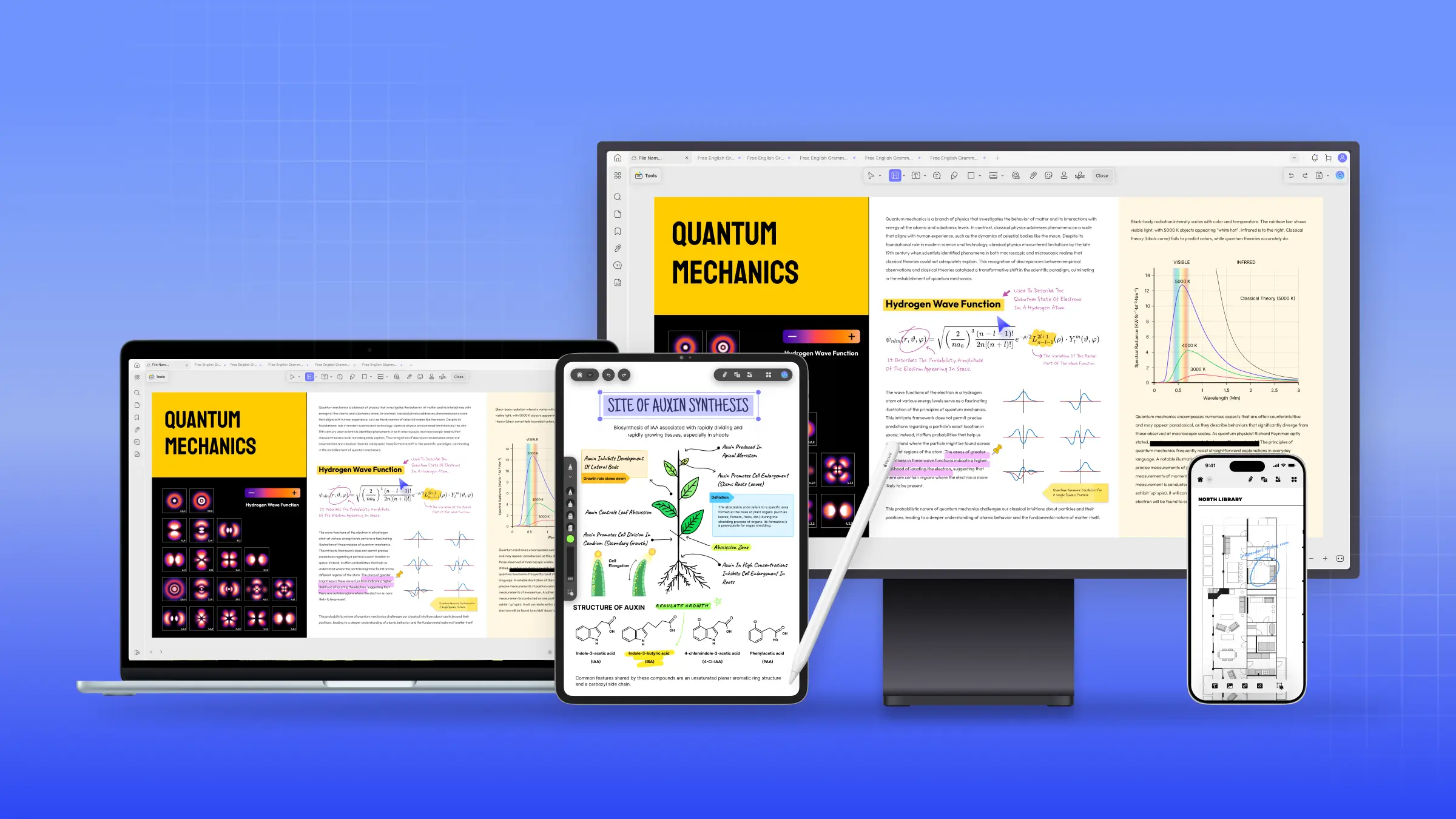





 Enya Moore
Enya Moore 
 Enrica Taylor
Enrica Taylor 
 Lizzy Lozano
Lizzy Lozano 

 Enid Brown
Enid Brown